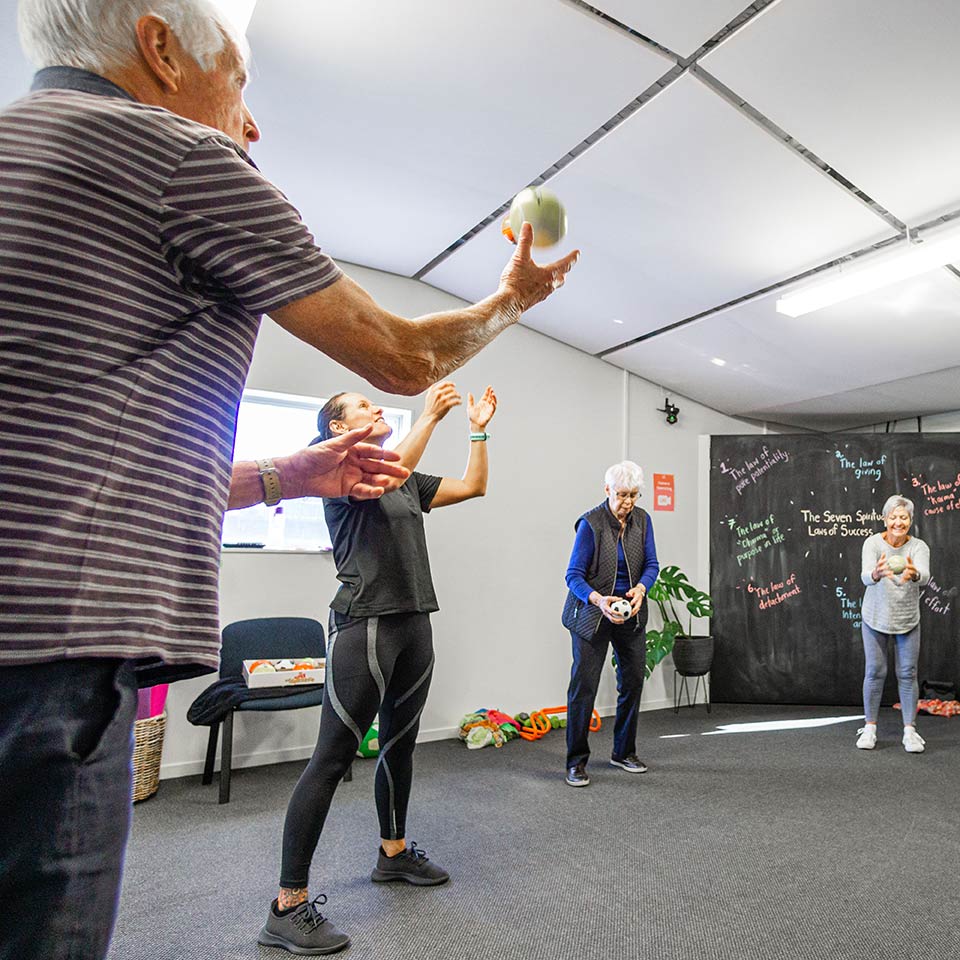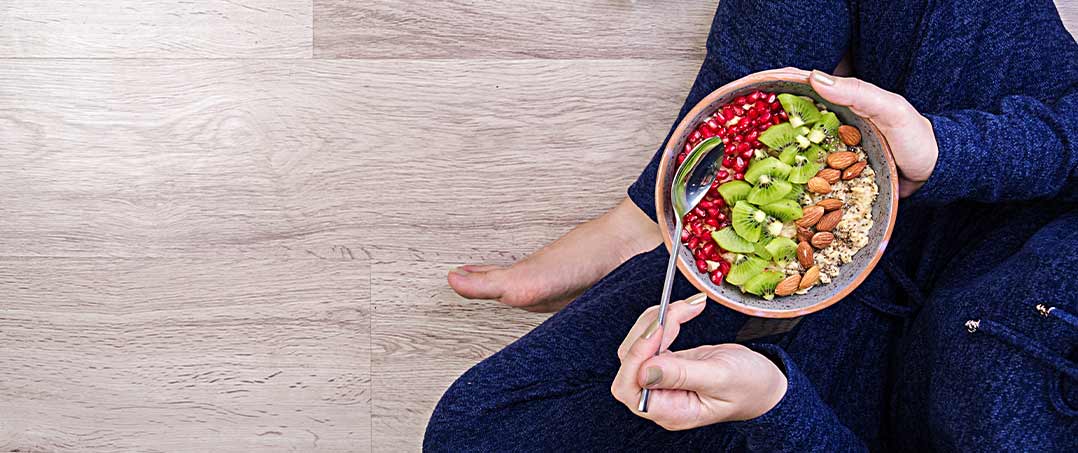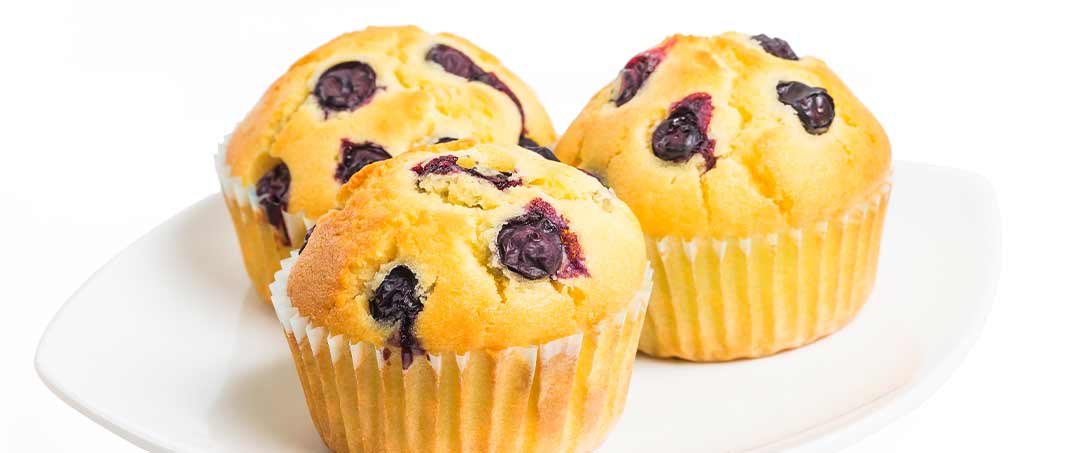by Emma G | Jan 22, 2025 | Behaviour, General Health
Putting yourself first is not selfish; it’s essential for your well-being and growth. You don’t need to do all of these steps, but integrating even a few into your life can make a meaningful difference.
Here’s a streamlined plan to help you make 2025 your healthiest year yet.
- Support Your Partner’s Healthy Choices by Joining Them
If your partner wants to change their diet or lifestyle, support them by participating. Shared goals foster accountability and success.
- Eat Mindfully
Slow down during meals, chew thoroughly, and ensure you swallow each bite before raising your fork again. This encourages proper digestion and helps you recognise fullness. Ask yourself if you need to finish everything on your plate each time.
- View Physical Activity as Hygiene
Think of exercise as you do brushing your teeth — a non-negotiable part of daily self-care. Find a form of exercise you enjoy.
- Hydrate First Thing in the Morning
Start your day with two glasses of water to rehydrate after sleep and energise your body.
- Make Decisions Based on How You Want to Feel
Your current feelings may not guide the best choices. Instead, align your actions with how you’d like to feel later.
- Optimise Meal Proportions
Build meals with a balanced 1:1 ratio of protein to carbohydrates. This can help stabilise energy and support your goals.
- Prioritise Sleep
Go to bed 20 minutes earlier each night. Across a week, this adds up to over two extra hours of restorative sleep.
- Prepare Meals in Advance
Set aside two hours each week for food preparation. Having goal-aligned meals ready removes decision fatigue and supports consistency.
- Experiment with New Recipes
Try a new recipe every couple of weeks. Expanding your palate and culinary skills can keep eating well enjoyable.
- Reframe Negative Feelings
Remember that “feeling yuk” is just a passing emotion. Moving your body or choosing a goal-aligned meal can shift this perspective quickly. The main goal being to feel good in yourself.
- Embrace Small Wins
A short, 10-minute workout is better than skipping exercise altogether. Consistency outweighs perfection.
- Enhance Sleep with Evening Carbs
If you’re struggling to sleep and follow a low-carb diet, add a small portion of starchy carbohydrates like kumara to your evening meal.
- Adjust Family Meals to Your Goals
Focus on tailoring your breakfast and lunch to your plan. For dinner, join the family’s routine. Progress isn’t about perfection; it’s about persistence and consistency.
- Stick to Long-Term Goals
Approach diet and exercise with a year-long perspective. Sustainable changes take time but deliver lasting results.
- Reconnect with Your Why Daily
Not everyone will support your journey, and that’s okay. Stay grounded in your reasons for change and revisit them regularly to stay motivated.
By incorporating these steps into your routine, you’ll create a solid foundation for lasting self-prioritisation and health throughout 2025.
by Emma G | Nov 20, 2024 | Behaviour
As we approach the end of the year, it’s common to feel drained. The holiday season, the demands of work, and the shifting seasons can all contribute to a sense of exhaustion. Despite feeling tired, it’s important to continue prioritising your health. Here are a few ways to maintain your daily health practices even when your energy feels low:
1. Simplify Your Routine
When you’re tired, complexity can be overwhelming. Stick to the basics—focus on the key practices that make the most difference, like staying hydrated, eating nutritious meals, and getting some form of movement. Simplify your workouts, opting for shorter but effective routines, or even a walk outdoors to keep your body moving.
2. Listen to Your Body
It’s crucial to acknowledge how your body feels. If you’re too exhausted for an intense workout, take a rest day. Consider yoga or stretching exercises to gently ease tension without overwhelming yourself. Your body needs time to recharge, so don’t feel guilty for taking a break when necessary.
3. Prioritise Sleep
Sleep is the foundation of all health. When you’re feeling tired, ensure you’re getting enough rest. Try to maintain a consistent sleep schedule and avoid late nights that can further drain your energy. Quality sleep will help replenish your energy levels and improve your overall well-being.
4. Stay Consistent, Not Perfect
Health practices don’t need to be perfect. If you’re tired, aim for consistency rather than intensity. A 20-minute session of mindful movement, a quick meditation, or even just taking a few minutes for deep breathing can be enough to support your health without overdoing it.
5. Nourish Yourself
End-of-year fatigue can be worsened by poor nutrition. Opt for whole, nutrient-dense foods to fuel your body. Include plenty of fruits, vegetables, lean proteins, and healthy fats. Staying hydrated and avoiding too much sugar, alcohol or caffeine will also help you maintain steady energy levels.
6. Get Outside
Fresh air and natural light can work wonders for combating fatigue. Even if it’s just a short walk outside, the exposure to sunlight and nature can help boost your mood and energy levels. This is also a great opportunity to practise mindfulness and connect with your surroundings.
7. Be Kind to Yourself
End-of-year fatigue doesn’t mean you’ve failed at your health practices. Remember, it’s okay to slow down and adjust your routine. Be compassionate toward yourself, and recognise that taking care of your mental and physical health during this time is just as important as when you’re feeling energetic.
Conclusion
While end-of-year tiredness is a natural part of the season, it doesn’t mean you have to completely abandon your health practices. By simplifying your routine, listening to your body, prioritising rest, and nourishing yourself, you can continue to nurture your health without overwhelming yourself. Remember, small, consistent efforts can have a big impact. Doing a little each day and maintaining that consistency, even when you’re tired, is the key to long-term health. It’s not about perfection, but about showing up for yourself every day, no matter how small the effort.
by Emma G | Sep 16, 2024 | Parkinson's Disease
For people grappling with Parkinson’s disease, the impact on vocal function is a common yet often overlooked aspect. Hypophonia, characterized by softer and less audible speech, can significantly affect communication. However, scientific research supports the efficacy of targeted voice exercises in mitigating these challenges and improving overall vocal health.
Studies such as the one conducted by Sapir et al. (2011) in the “Journal of Communication Disorders” highlight the effectiveness of voice exercises, particularly emphasizing the benefits of Lee Silverman Voice Treatment (LSVT®), a widely recognized program tailored for people with Parkinson’s. This program focuses on amplitude exercises, encouraging patients to produce louder and clearer speech, leading to increased vocal intensity and improved communication.
Another study by Ramig et al. (2014) published in the “Journal of Neurology, Neurosurgery & Psychiatry” delves into the neurophysiological aspects of voice exercises. The research suggests that targeted vocal exercises may induce neuroplastic changes in the brain, promoting neural adaptations that contribute to enhanced vocal control and articulation.
Incorporating scientific findings into practice, voice exercises for Parkinson’s encompass various techniques. Diaphragmatic breathing, as supported by studies such as that by Miller et al. (2007) in the “Journal of Speech, Language, and Hearing Research,” plays a crucial role in strengthening respiratory support for speech, resulting in improved vocal projection.
Beyond the physiological benefits, engaging in voice exercises has psychological implications. A study by Baker et al. (2011) in the “Journal of Medical Speech-Language Pathology” indicates that individuals who participated in regular voice exercises reported increased self-esteem and confidence in their communication abilities.
In conclusion, scientific evidence underscores the transformative impact of targeted voice exercises for Parkinson’s disease. By incorporating these practices into daily routines, patients can empower themselves to maintain vocal strength, clarity, and overall well-being, ultimately improving their communication skills and quality of life.

by Emma G | Mar 10, 2024 | Parkinson's Disease
Living with Parkinson’s disease presents unique challenges, but emerging research underscores the transformative impact of exercise on managing its symptoms. Beyond the physical benefits, regular physical activity has been proven to enhance overall well-being and quality of life for individuals grappling with Parkinson’s.
Exercise serves as a powerful ally in the battle against Parkinson’s, offering a range of benefits that extend far beyond the confines of a gym. One of the primary advantages is the positive impact on motor function. Rigorous workouts, including aerobic exercises, strength training, and flexibility routines, have been shown to improve balance, coordination, and overall mobility—common challenges for those with Parkinson’s.
Exercise has been linked to a reduction in the severity of non-motor symptoms, such as depression and anxiety, which often accompany Parkinson’s disease. The release of endorphins during physical activity acts as a natural mood booster, contributing to a more positive mental state.
Engaging in regular exercise may slow down the progression of Parkinson’s by promoting the release of neuroprotective factors. Studies suggest that physical activity stimulates the production of brain-derived neurotrophic factor (BDNF), a protein associated with the growth and survival of neurons. This neuroprotective effect is crucial for individuals with Parkinson’s, as it may help preserve brain function and delay the onset of more severe symptoms.
The significance of exercise in managing Parkinson’s disease cannot be overstated. By embracing a consistent and tailored exercise routine, individuals with Parkinson’s can empower themselves to take an active role in improving their physical and mental well-being, ultimately enhancing their overall quality of life.
I work 1-on-1 with clients with Parkinson’s Disease and currently have 4 x group classes a week for people with Parkinson’s. Please get in touch to discuss which option could work best for you.

by Emma G | Apr 14, 2021 | Behaviour, Business of Health, General Health, Movement
(more…)

by Emma G | Aug 12, 2020 | Behaviour
What is disordered eating?
Is it…?
- not eating breakfast
- having a cheat meal every week.
- fasting
- keto
- obsessing about macros
- binge and restriction cycles
We all choose different ways of eating and it’s a subject that brings up passion and conversation in people. A lot of us like to defend our choices and even preach about them. Eating, food types and behaviours is such an interesting topic, unlike smoking and other behaviours, it’s something we are unable to give up. There are so many posts, opinions, influencers, marketing ploys all attempting to push their way of eating, it can be a confusing mess trying to decipher it all.
Disordered eating can be used to describe unhealthy eating behaviours and concern about body image. It covers a range of irregular eating behaviours that may have not yet developed into a diagnosed eating disorder. People experiencing these behaviours maybe under a significant amount of physical, mental and emotional stress. This is a very serious issue and can progress into a diagnosed eating disorder.
How do you know if you have disordered eating behaviours?
I believe that most of us have some form of disordered eating from time to time, in varying levels and in different ways.
Physical and mental symptoms to look out for in yourself or loved ones
- Dieting
- Substantial weight fluctuations
- Rituals and routines with food and exercise
- Feelings of guilt around eating
- Preoccupation with food, weight, body composition, body image
- Loss of control around food
- Purging behaviours post eating
- Physical signs could be bad breath, dry skin, brittle hair, tooth decay
- Gut issues
- Amenorrhea, F.A.T (female athlete triad) / RED-S (relative energy deficiency in sport)
Having had, and still having a turbulent relationship with food, I would say that dieting is a disordered eating behaviour. Dieting can encourage the restrict and binge cycles. I ask my clients to try and find a way of eating for life, not for 8 or 12 weeks. If you are doing something you can’t maintain long term, then that’s a diet. Ask yourself, is your current way of eating serving you? Can you continue to adhere long term? How about instead thinking of permanent wee changes you can make to your eating behaviours for the long term?
Disordered eating is a serious issue, once behaviours become classified as an eating disorder, then we class the illness as psychological. Be aware that your disordered eating behaviours may jump in and out of various eating disorders even if you don’t exhibit the exact criteria for diagnosis.
Eating Disorders
- Bulimia nervosa – eating excessive amounts and purging in some way post eating
- Anorexia nervosa – restricting food intake
- Binge Eating Disorder (B.E.D) – excessive compulsive food consumption
- Avoidant Restrictive Food Intake Disorder (ARFID) – person avoids a certain type of food(s) completely
- Other specified feeding and eating disorder (OSFED) – behaviours overlap and jump in and out of the above
If the above is resonating with you in regard to yourself or others, then there are many tools to help.
Throughout my recovery I found that you need a team of people supporting you, encouraging you and nurturing you to help you through this, I believe you can’t do this alone.
If you would like some guidance with tools or where to start on your path to recovery, then please get in touch with me.
[email protected]
027 431 5920

by Emma G | Jun 22, 2020 | Ageing, General Health, Movement
Walking is such a great first step, he he, in improving your health. It’s convenient, you can do it from anywhere, you don’t need any specific gear or clothing and you have the available tools to start now. Walking is a natural activity, it’s a sustained aerobic exercise that is common for all of us, excluding those who are disabled or extremely frail.
The great thing about walking is you are completely in charge of the intensity, duration and frequency. “It is a year-round, readily repeatable, habit-forming activity and the main option for increasing physical activity in sedentary populations.”*
In today’s World where physical inactivity levels are rising, walking could be the solution to getting you on your feet. Unlike a lot of physical activity, there is little, if any, decline in middle age, so again its available for most of us. It is available to us all year round. It has the added benefits of increasing a person’s independence and social well-being. When I’m out walking, I smile at people I pass, stroke various dogs and look around taking note of my environment. Even though it can be a solitary activity you can still feel part of a community when walking. On other occasions I will be earphones in and listening to a podcast, this makes for great me time.
Did you know that there are indications that walking increases bone related strength? Walking is weight-bearing, it keeps the leg and trunk muscles strong and their joints flexible. Getting up, moving about and changing positions during the day helps your body stay healthy, your body likes variety, it doesn’t like being stuck in a chair all day.
Walking at low or moderate intensities is associated with cardiovascular benefits, it may help improve cholesterol profile, help control hypertension (high blood pressure) and as mentioned above, slow the process of osteoporosis by strengthening your bones. If you stick to a brisk pace it will provide enough cardiovascular training for most adults, think sweaty and heavy breathing.
Walking can help with weight loss and maintenance in a low impact way. Not all of us are built for running or high intensity exercise.
Getting outside and on your feet will help with vitamin D absorption from the sun, in winter in New Zealand I guarantee that most of us are walking around vitamin D deficient as we are not able to absorb enough from the sun.
I find going for a walk brings me a lot of inner peace, if I’m feeling troubled or a bit anxious, I get out for a walk and aim to stay present in my surroundings. I look for flowers and interesting buildings, I get out of my head and appreciate my community.
Walking helps improve your mood, eases anxiety and reduces social withdrawal. When I’ve been in my depression bouts, getting up and getting my shoes on to go for a walk, even though that was hard to do sometimes, really helped. During Covid walking really helped me, I got to find new places locally and even got lost in Westmere once.
Several clients mention that during the week they don’t have time to leave the office for a wee walk. While I understand, I do always think that you do have the time and if you put the boundaries in place people will respect them, though that’s a different topic. A good excuse for doing it is that walking promotes creative thinking. If you are stuck on something and sitting at your work desk, get up, get outside, move your body and I’m sure you will move towards the solution once you return to your desk.
All the different fitness trackers can be really motivating for some people. I always suggest getting a couple of weeks data before setting yourself targets, then increasing incrementally; keeping goals just a wee further out from your comfort zone.
Humans are made to move, most of us need to move more, and I’m talking move not exercise hard out. You can try and fit it into your day by walking to work or by trying to increase daily steps, so that it doesn’t become another thing you have to do at the end of each day.
Get yourself a walking buddy, dog, comfy shoes, clothes, a water bottle and you’re ready to go. Dress for the weather and start small. I’m going to say it, one step at a time team. Starting is the key… start today.
*Morris, J.N., Hardman, A.E. Walking to Health. Sports Med 23, 306–332 (1997). https://doi.org/10.2165/00007256-199723050-00004
Rippe JM, Ward A, Porcari JP, Freedson PS. Walking for Health and Fitness. JAMA.1988;259(18):2720–2724. doi:10.1001/jama.1988.03720180046031

by Emma G | May 6, 2020 | General Health
It’s only a muffin so eat it if you want it right? I’ve been talking about eating behaviour’s a lot this week and been dealing with my own craziness around the topic ?
Food to a lot of us is a security blanket, it’s how we make ourselves feel good and can give us a moment of comfort. We are in odd and stressful times so if a muffin gives you a bit of comfort then eat the muffin.
Lockdown and isolation are hard for all of us, those of us who struggle or have struggled with disordered eating behaviours are finding it quite difficult. At home 24/7 with food, which we may have stockpiled to avoid repeated trips out. We are stressed, possibly alone or stuck with a heap of people we haven’t chosen and anxious, which is a recipe ? for these behaviours to be prevalent.
Now is a time to aim to go easy on yourself and be kind. It’s okay if certain behaviours have creeped back in. Disordered eating initially can make you feel good, happy and safe so if it’s ticking these boxes then try and accept that. We know that over time these behaviours are not ideal, though right now they may be serving their purpose. Disordered eating and eating disorders are a coping mechanism, yes there are better ones, though in this moment if they are looking after you in a way, then acceptance may be the way to go.
Be conscious around your behaviours, observe yourself and reflect. Being aware of why you are behaving in a certain way is a starting point to making changes and improving, implementing or eliminating said behaviours at an appropriate time. Now maybe not the right time for most people. Change takes energy and brain space; do you have any spare to make changes right now?
Other ways we can show ourselves some self care
- Include things in your day that you enjoy, I know this sounds obvious, though its often overlooked.
- Self-massage
- Listening to music or podcasts and watching programmes
- Yoga
- Have a bath
- Getting outside in nature, in bush or at the beach if these are available to you at present
- Take some time for yourself
- Try and think about the present and be in the now
- Aim to not compare or consume “media” that causes negative thoughts and feelings. Delete, unfollow, unsubscribe
- Move your body in a way that feels good to you each and every day
My message is to try observe yourself and your behaviours. Accept them and reflect on them, try and understand why you behave in a certain way. With this information you can look into ways to reduce, eliminate or change, remembering it’s a process and it takes time team.
Be (try) kind to yourselves ?
by Emma G | Sep 20, 2019 | Clients
This years survey results are in, I like to send out a yearly survey to my clients as all feedback is good feedback and I am constantly striving to improve what I do so I can support more people.
Everyone who received a survey request completed the survey which is fantastic.
- 81% of people would recommend me with the other 19% being passive
- 100% people very satisfied or satisfied
- People describe me as reliable, high quality and useful.
Key quotes from the team
“Keep doing what you are doing!”
“Very personalised, takes time to get to know you. Lots of encouragement and sessions tailored to you individually.”
“Emma supports you step by step and this is much appreciated.”
“Supports older adult’s fitness”
“Tailored workout program, goal setting each week for eating or movement, Emma checks in with you before the session to make sure you have no areas of concern (anything painful) before embarking on your exercise, checks on energy levels and how you are.”
“makes you feel good about yourself even on shitty days when you don’t meet your goal”
Thanks everyone for taking the time to complete, means a lot to me, all your feedback is greatly appreciated.

by Emma G | Feb 18, 2019 | General Health
Does the word make you roll your eyes or do you have a current practise? There are different ways you can meditate, experiment and see what works for you. Even if it’s simply sitting somewhere quiet and focusing on your breathing. No hippy pants required I promise.
Meditation can reduce (negative) stress, improve sleep, improve relationships and increase focus.
“The quality of the breath is not only related to the length of our lives, but is intimately connected to the mental and emotional states as can be seen by how the breath changes with different states of mind.”
Swami Karma Karuna
Tools
Headspace – both free and subscription resources
Buddhify – subscription resources
1 Giant Mind – both free and subscription resources
Calm – both free and subscription resources
There is an abundance of You Tube channels for guided and unguided meditations.
Check out local mindfulness/meditation classes in your area, there will be several to choose from.
“If you are quiet enough, you will hear the flow of the universe. You will feel its rhythm. Go with this flow. Happiness lies ahead. Meditation is key.”
Buddha
Lying down somewhere and focusing on doing a set of 10 diaphragmatic (abdominal/belly) breaths is a good way to start looking at how you breathe. This type of breathing also slows the heartbeat and can lower/stabilise blood pressure.
One tool I use is my acupressure mat and pillow, focusing on my breathing with my hand on my tummy. I also like lying on my bed with my feet up against the wall focusing on my breath and trying not to attach myself to the many thoughts that whirl through my mind.
Meditation for you could be walking the dogs and remaining totally present, watching a sunset or listening to your favourite music. You can do it anytime of the day, start with as little as 3 mins and then increase from there. Think of it as a time out to focus on your breath and be present.
Its totally okay to take this time for yourself, happy meditating team!






